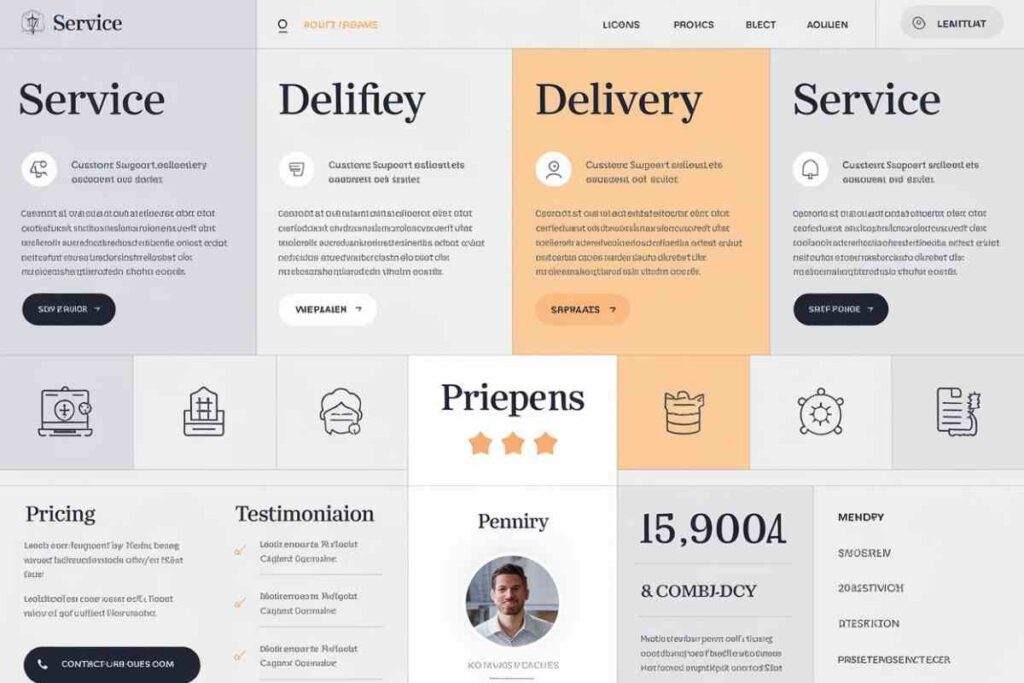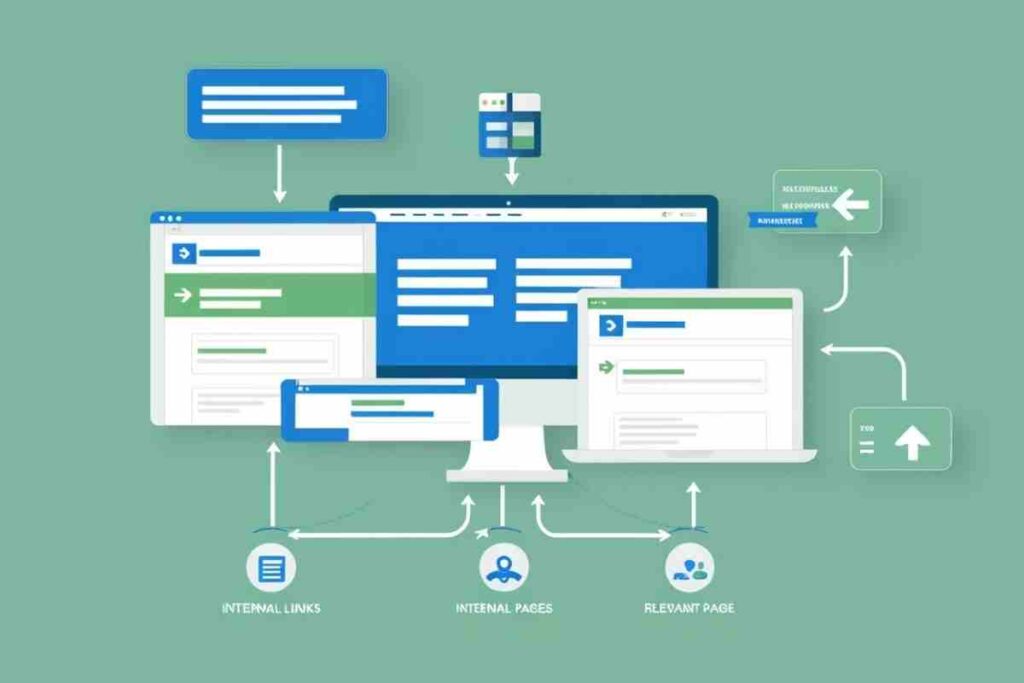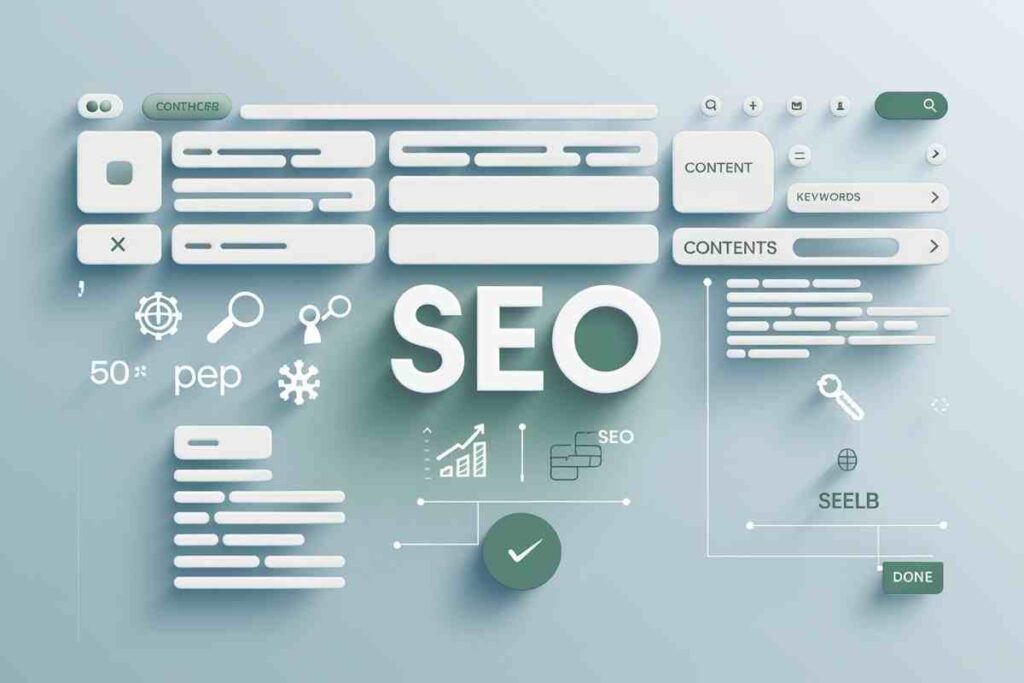Optimizing your main service page is a critical component of any successful SEO strategy. A well-optimized service page can drive organic traffic, improve user experience, and ultimately increase conversions.
But how do you make sure your service page is fully optimized for search engines and provides value to your users.
This article will cover everything you need to know about what to include on main service page SEO website to ensure it ranks higher and stands out in search results.”
Why Optimizing Your Service Page is Crucial for SEO

Before diving into the specifics, it’s essential to understand why your service page matters. The service page is where you showcase your offerings and demonstrate how your solutions address customer pain points. Google’s algorithms reward pages that are highly relevant and provide value to users.
Optimizing your service page is one of the most effective ways to achieve a higher ranking in search engine results pages (SERPs), generate leads, and ultimately drive sales.
A well-optimized service page can help you:
- Rank higher in Google search results
- Improve visibility for relevant keywords
- Establish authority in your industry
- Reduce bounce rates and improve user engagement
- Increase conversions and sales
Now, let’s break down what you should include on your main service page to achieve these results.
Clear and Compelling Headline (H1)
Your headline is one of the most important elements of your service page. It’s the first thing visitors see and also a crucial factor for search engine rankings. A compelling headline will grab your audience’s attention, while a well-optimized H1 tag ensures search engines understand the content of the page.
- Best Practice: Use your primary keyword (e.g., “What to Include on Main Service Page SEO Website”) in the H1. Make sure it’s concise and clearly describes the service you’re offering. Example: “What to Include on Main Service Page SEO Website: Expert Optimization Strategies”.
A Strong Value Proposition
A value proposition tells visitors why they should choose your services. It should be clear, concise, and immediately visible on the page. This is where you explain the key benefits of your service and what sets you apart from competitors.
- Best Practice: Your value proposition should be prominent, preferably within the first few lines or in a hero section at the top of the page. Make sure it highlights the benefits to the user, using actionable language.
Keyword-Rich Content (Body Text)
The content on your service page should focus on addressing the needs of your audience while integrating your target keywords. Google favors content that directly answers users’ queries and provides detailed, relevant information.
- Best Practice: Incorporate both short-tail and long-tail keywords naturally into your content. Long-tail keywords (e.g., “SEO service page optimization tips”) capture more specific, high-intent search queries. Don’t overstuff keywords, as Google penalizes pages for keyword stuffing. Aim for a keyword density of around 1% for your primary keyword.
- Content Tip: Organize your content into digestible sections. Use H2 and H3 tags to structure the page logically and improve readability.
Service Descriptions with Details

For each service you offer, provide detailed descriptions. Your service descriptions should answer potential customers’ questions, explain how your services work, and address how they can benefit from your offerings.
- Best Practice: Use bullet points or tables to make the descriptions scannable. Include relevant keywords but keep the focus on the user experience.
| Service | Description | Benefits |
|---|---|---|
| SEO Audit Services | In-depth audit of your website’s SEO performance. | Identify key SEO issues and improve rankings. |
| Content Creation | High-quality blog posts and web content. | Boost your online authority and engagement. |
| Local SEO Optimization | Target local audiences to rank in your area. | Drive foot traffic and increase local leads. |
Social Proof: Testimonials and Case Studies
Including testimonials, reviews, and case studies is one of the best ways to build trust with your audience. It also provides valuable content that Google can index.
- Best Practice: Feature authentic testimonials from real clients. If possible, include a case study that demonstrates the results of your services. Include numbers or metrics to make the case study more convincing.
Calls to Action (CTA)
A well-placed call to action (CTA) drives conversions. Your service page should have a clear CTA, guiding visitors toward the next step—whether that’s scheduling a consultation, filling out a contact form, or making a purchase.
- Best Practice: Make your CTA stand out visually, using action-oriented language. Phrases like “Get Started Today” or “Schedule a Free Consultation” encourage visitors to take the next step.
Optimize for Mobile and Speed
Google prioritizes mobile-friendly websites and page speed as ranking factors. Your service page should provide a smooth, fast experience on both desktop and mobile devices.
- Best Practice: Use responsive design to ensure your page looks great on all devices. Test your page speed using tools like Google PageSpeed Insights and make necessary optimizations to improve load times.
Include Internal Links and Relevant Pages

Internal linking helps Google understand your website’s structure and allows users to navigate easily between related pages. It also helps distribute link equity across your site, which can improve overall SEO.
- Best Practice: Include links to relevant blog posts, product pages, or other services you offer. For example, if you’re discussing SEO services, link to a blog post on “How SEO Improves Website Traffic.”
Optimized Metadata
Metadata is invisible to users but vital for search engines. A well-crafted meta title and description encourage higher click-through rates (CTR) on search engine results pages (SERPs).
- Best Practice: Ensure your meta title contains your target keyword and clearly describes what the page is about. For example, “What to Include on Main Service Page SEO Website – Best SEO Strategies for Service Pages.” Your meta description should also be engaging and informative, summarizing the page content in 160 characters.
Schema Markup
Schema markup is a type of structured data that helps search engines understand the content of your page better. Adding schema to your service page can help your page appear in rich snippets, which can improve visibility in SERPs.
- Best Practice: Use Service Schema or FAQ Schema (if applicable) to provide additional context to search engines. This can increase the likelihood of your page appearing as a featured snippet or in other enhanced SERP features.
Frequently Asked Questions (FAQ)
Including an FAQ section can address common queries from potential customers while improving your SEO by adding content that directly matches what users are searching for.
- Best Practice: Focus on long-tail questions related to your services. For example, “What to include on a main service page for SEO?” or “How do I optimize my service page for local SEO?”
User-Friendly URL Structure
Your URL should be short, descriptive, and include your primary keyword. A clean, easy-to-read URL is more likely to rank well.
- Best Practice: Example URL: https://blog.rteetech.com/las-vegas-search-engine-optimization/
Conclusion
A well-structured SEO service page is essential for attracting, engaging, and converting visitors. By including What to Include on Main Service Page SEO Website, such as optimized content, clear CTAs, testimonials, and a breakdown of services, you can enhance your rankings and credibility. Prioritizing SEO best practices ensures better visibility, user experience, and business growth.
Additionally, focusing on What to Include on Main Service Page SEO Website helps search engines understand your offerings, improving your chances of ranking higher.
A strong service page not only drives traffic but also builds trust with potential clients, increasing conversions and long-term success. Implement these strategies to create a high-performing SEO service page today!
FAQS
What to Include on Main Service Page SEO Website?
The page should have SEO services, case studies, CTAs, and a FAQ section for better engagement.
What is included in SEO services?
SEO services include on-page SEO, off-page SEO, technical SEO, and local SEO to improve rankings.
How to structure a service page?
To structure it effectively, include What to Include on Main Service Page SEO Website, a CTA, and testimonials.
How to write service page content?
Writing service page content should focus on What to Include on Main Service Page SEO Website with engaging and optimized text.
What is included in on-page SEO?
On-page SEO includes What to Include on Main Service Page SEO Website, keyword usage, meta tags, and internal linking.
Why is a service page important for SEO?
A well-optimized page with What to Include on Main Service Page SEO Website helps improve search rankings and conversions.
How does an SEO service page improve conversions?
Adding What to Include on Main Service Page SEO Website builds trust, showcases expertise, and increases customer inquiries.
What to Include on Main Service Page SEO Website for better rankings?
Include optimized content, structured data, fast loading speed, and clear CTAs for SEO success.



